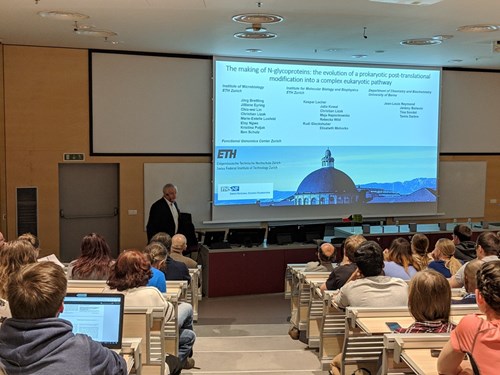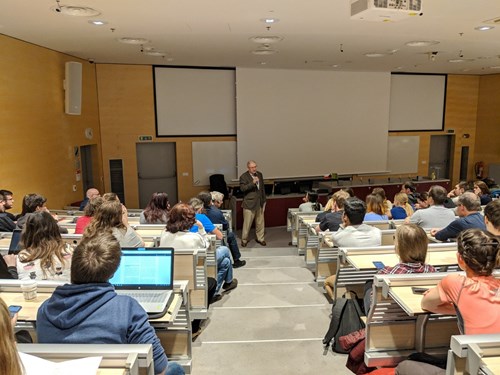About the lecture
N-linked protein glycosylation occurs in all three domains. Homologous processes exist throughout the archaeal and the eukaryotic domain and in selected bacterial clades.
This protein modification pathway is characterized by the assembly of an oligosaccharide on an isoprenoid lipid carrier at the plasma membrane of prokaryotes or the membrane of the eukaryotic Endoplasmic Reticulum and the transfer of the oligosaccharide to selected asparagine residues of extracellular (secretory) proteins.
A detailed characterization of the prokaryotic system present in Campylobacter species has revealed the fundamental concepts of pathway organization and the molecular mechanisms of the central step in the N-glycosylation process, the oligosaccharyltransferase reaction. In addition, these studies made it possible to develop a biotechnological method that enabled a bacterial production system for glycoproteins that can be used as glycoconjugate vaccines.
Built on the molecular concepts of the prokaryotic N-glycosylation pathway, eukaryotic N-linked protein glycosylation evolved into one of the most abundant post-translation modification of proteins in eukaryotes. It now involves two organelles, the Endoplasmic Reticulum and the Golgi. Novel functionalities such as glycan assisted protein folding and quality control or glycan-dependent, protein-specific properties evolved.


